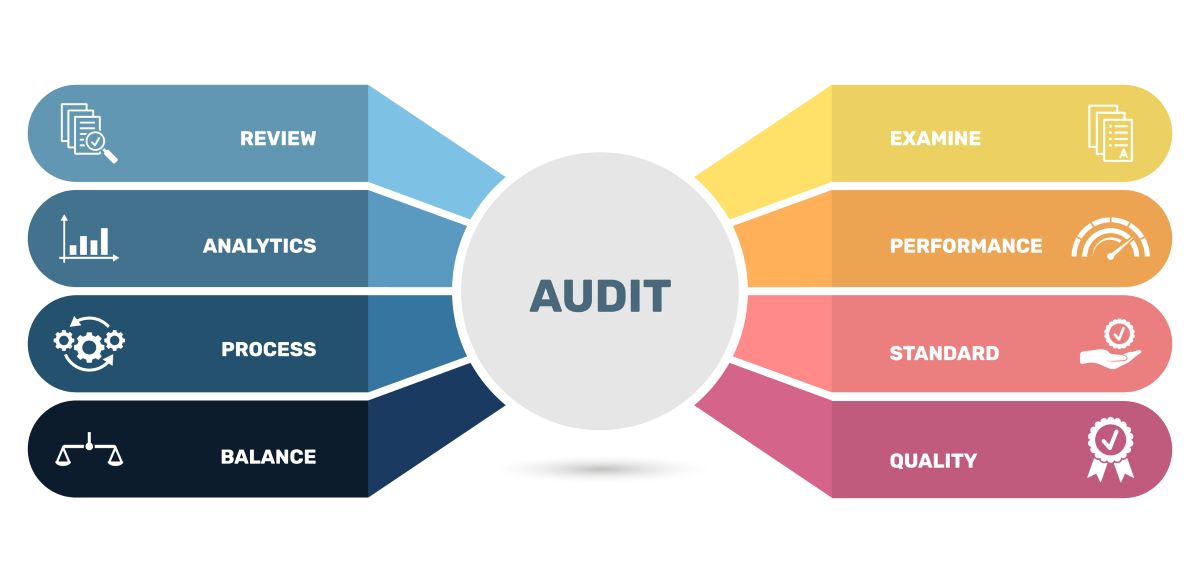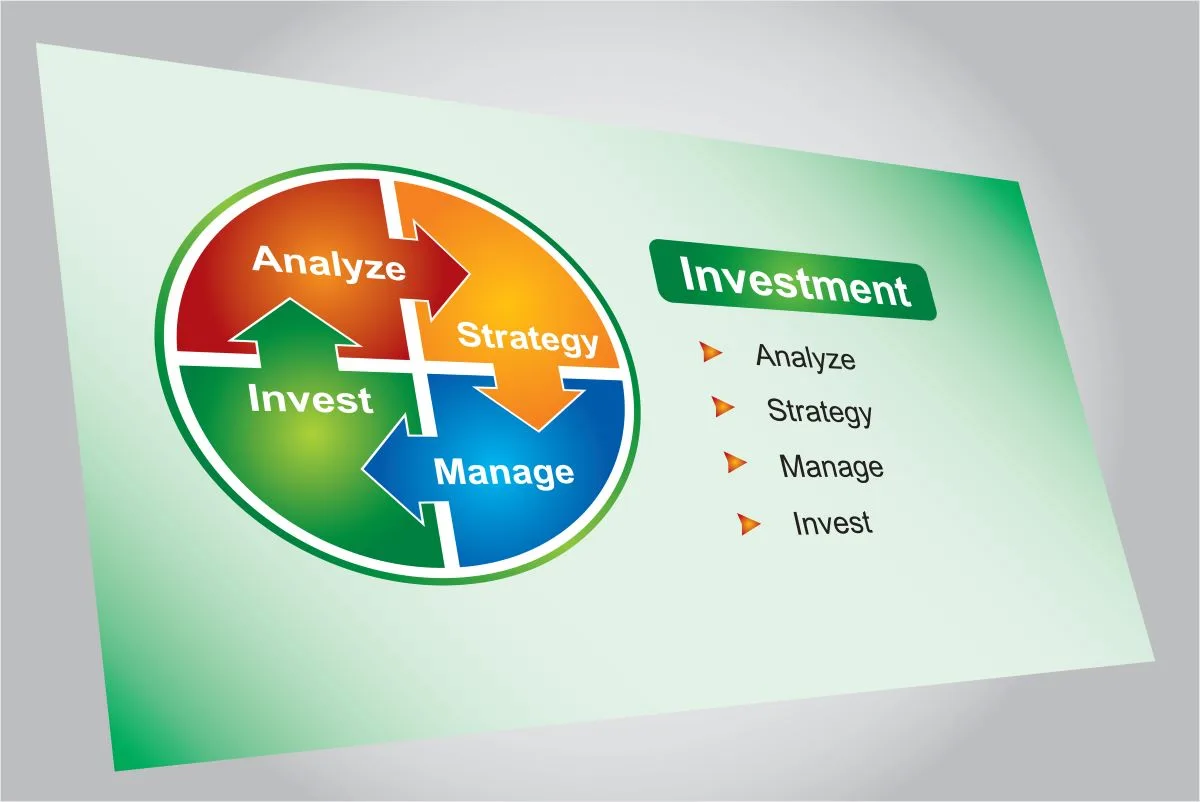Introduction to Fake Accounting
Fake Accounting: Also known as accounting fraud, involves the deliberate manipulation of financial statements to create a false impression of a company’s financial health. This unethical practice can include falsifying records, misrepresenting financial data, or omitting crucial information. As you navigate the complexities of financial reporting, understanding the nuances of fake accounting is crucial for protecting your business interests.
Rise of the Machines: In today’s ever-evolving financial landscape, fake accounting remains a significant concern. With advancements in technology, fraudulent activities have become more sophisticated, making it challenging to detect deceitful practices. By gaining a comprehensive understanding of fake accounting, you can better equip yourself to recognize and combat these fraudulent activities effectively.
Safeguarding Reputations: Being aware of fake accounting practices can help you maintain the integrity of your financial reporting and safeguard your company’s reputation. It is essential to stay informed about the latest trends and techniques used in fraudulent accounting to preemptively address potential threats.
The Impact of Accounting Fraud on Businesses
Financial Destruction: The repercussions of accounting fraud cfraud an be devastating for any organization. Financial misrepresentation can lead to a loss of stakeholder trust, resulting in decreased investments and a tarnished public image. As a business leader, understanding the potential impacts of accounting fraud allows you to appreciate the importance of maintaining transparent financial practices.
Regulatory Enforcement and Litigation: Accounting fraud can also have severe legal and financial consequences. Businesses involved in such practices may face fines, penalties, and even bankruptcy. Additionally, individuals within the organization may be subject to prosecution, leading to personal and professional ramifications. Recognizing these potential outcomes underscores the critical need for vigilance and integrity in financial reporting.
Reputational and Trust Damages: Moreover, the ripple effects of accounting fraud extend beyond the immediate organization. It can destabilize industries, diminish investor confidence, and affect the broader economy. By prioritizing the prevention of fraudulent practices, you contribute to a more stable and trustworthy financial environment for all stakeholders.
Common Types of Fake Accounting Practices
Understanding the various methods of fake accounting can help you identify and prevent fraudulent activities within your organization. Some common types include:
- Revenue Recognition Manipulation: This involves prematurely recording revenue or inflating sales figures to present an artificially positive financial outlook.
- Expense Manipulation: By understating expenses, a company can falsely enhance its profitability. This can involve delaying expense recognition or misclassifying operating costs as capital expenditures.
- Asset Valuation Fraud: Overstating the value of assets can mislead stakeholders about a company’s true financial position. This may involve inflating inventory values or misreporting asset depreciation.
By familiarizing yourself with these practices, you can implement more effective internal controls to detect and prevent accounting fraud. Proactively addressing these issues will help protect your organization from potential financial and reputational harm.
Identifying Signs of Accounting Fraud
Detecting accounting fraud requires a keen eye for detail and a comprehensive understanding of financial statements. Some key indicators of fraudulent activities include:
- Inconsistencies in Financial Reports: Discrepancies between reported figures and actual financial performance can signal potential fraud.
- Unusual Transactions: Unexplained or complex transactions, especially those involving significant sums, may indicate fraudulent behavior.
- Frequent Accounting Adjustments: Regular adjustments to financial statements without clear justification can be a red flag.
By regularly reviewing financial records and staying alert to any signs of irregularities, you can better safeguard your organization against accounting fraud. Encouraging a culture of transparency and accountability within your company can also help in early detection and prevention.
Additionally, investing in training for your finance team can enhance their ability to identify potential red flags. By fostering a knowledgeable and vigilant workforce, you strengthen your organization’s defenses against fr
The Role of Internal Controls in Preventing Fake Accounting
Robust Internal Controls: Implementing robust internal controls is a crucial step in preventing fake accounting. These controls can include regular audits, segregation of duties, and comprehensive oversight of financial transactions. By establishing a strong system of checks and balances, you can significantly reduce the risk of fraudulent activities within your organization.
Continuously Verify Financials: Regular audits are essential for verifying the accuracy and integrity of financial statements. By conducting both internal and external audits, you can ensure that your financial reporting adheres to relevant standards and regulations. This oversight is crucial for maintaining the trust of stakeholders and preventing fraudulent practices.
Segregation of Duties: This is another vital component of effective internal controls. By dividing responsibilities among different employees, you reduce the likelihood of collusion and ensure that no single individual has control over all aspects of financial transactions. This division of responsibilities acts as a deterrent to fraudulent behavior and enhances overall accountability.
Importance of Corporate Governance in Fraud Prevention
Corporate Governance: Plays a pivotal role in safeguarding against accounting fraud. A strong governance framework establishes clear policies and procedures for financial reporting and accountability. By promoting ethical behavior and transparency, corporate governance can help prevent fraudulent practices from taking root within your organization.
Independent and Diverse Board: A well-structured board of directors is essential for effective corporate governance. Board members should possess diverse expertise and be committed to upholding the highest ethical standards. By providing oversight and guidance, the board can ensure that management adheres to established policies and that financial reporting is accurate and transparent.
Ethics and Integrity: fostering a culture of integrity within your organization is essential for effective corporate governance. Encouraging open communication and ethical behavior can deter fraudulent activities and promote a more transparent and trustworthy financial environment. By prioritizing corporate governance, you strengthen your organization’s defenses against accounting fraud.
Legal Consequences and Securities Litigation Related to Fake Accounting
Accounting Machinations: Engaging in fake accounting can lead to severe legal consequences for both individuals and organizations. Companies found guilty of fraudulent activities may face fines, penalties, and regulatory sanctions. Additionally, individuals involved in such practices may be subject to civil and criminal charges, resulting in significant personal and professional repercussions.
Securities Litigation: A common outcome of accounting fraud. Investors who suffer financial losses due to fraudulent activities may pursue legal action against the company and its executives. These lawsuits can be costly and time-consuming, further damaging the organization’s reputation and financial stability.
To mitigate the risk of securities litigation, it is essential to maintain transparency and accuracy in financial reporting. By prioritizing ethical behavior and adhering to relevant regulations, you can protect your organization from potential legal challenges and preserve stakeholder trust.
The Eight Biggest Triggers to Securities Litigation
| Asset Valuation Manipulation | Asset valuation manipulation is the intentional misrepresentation of an asset’s value for fraudulent purposes, such as misleading investors, obscuring illicit funds, or inflating a company’s financial health. Common methods include overstating assets, manipulating accounting assumptions in cash flow analysis, and misrepresenting liabilities, often leading to significant financial losses when the true value is eventually revealed |
Off-Balance-Sheet Schems | Off-balance-sheet (OBS) schemes are legal accounting methods used by companies to keep certain assets and liabilities from appearing on their main balance sheet. By doing this, a company can improve its financial ratios, such as its debt-to-equity ratio, to appear more attractive to investors and lenders. |
| Material Omissions | A material omission is the failure to provide important facts or information that, if known, would likely influence a reasonable person’s decision in a significant way, such as in an investment or contract. This failure can create a misleading impression, and in legal and financial contexts, it can lead to penalties and liability, especially if there was a duty to disclose the information, as seen in securities law. |
Timing Manipulation | Timing manipulation in financial statements involves intentionally altering the timing of revenue recognition and expense recognition to misrepresent a company’s financial performance. Common methods include recording revenue prematurely, deferring expenses to a future period, and manipulating asset valuations or provisions to achieve desired earnings targets, which can be unethical or illegal. |
| Cookie Jar Reserves | Cookie jar reserves are an accounting practice where companies create hidden reserves by overstating expenses or understating revenues in profitable periods to artificially smooth earnings and boost reported profits in subsequent, less profitable periods. This form of earnings management is a form of financial statement manipulation that can mislead investors, as seen in cases involving Dell and Xerox, and is illegal when used to deceive stakeholders. |
| Expense Capitalization | Expense capitalization is an accounting method where a company records a cost as an asset on the balance sheet instead of an immediate expense on the income statement. This is done for expenditures that provide future economic benefits over multiple accounting periods, such as buying equipment or a building. The cost is then gradually expensed over the asset’s useful life through depreciation. |
| Asset Valuation Manipulation | Asset valuation manipulation is the fraudulent alteration of an asset’s value to mislead investors, conceal illegal activities, or manipulate financial reporting. This can involve artificially inflating or deflating the price of securities, high-value goods like art, or real estate by creating fake transactions or misrepresenting inventory. It is often used in schemes like Ponzi schemes to keep the operation afloat, to qualify for loans, or to meet performance targets tied to bonuses. |
|
Round-Trip Transactions | A round-trip transaction is a series of financial transactions that end with the participants in the same financial position they began in, creating no genuine economic benefit. While it can simply refer to the cost of a purchase and sale, it is often used as a deceptive scheme to create the false appearance of revenue, activity, or investment. In fraudulent accounting and market manipulation, the term “round-tripping” or “circular trading” is widely associated with unethical and illegal activities. This was a key part of the notorious Enron accounting scandal.
|
THE SECURITIES LITIGATION PROCESS
Filing the Complaint | A lead plaintiff files a lawsuit on behalf of similarly affected shareholders, detailing the allegations against the company. |
Motion to Dismiss | Defendants typically file a motion to dismiss the securities class action lawsuits, arguing that the complaint lacks sufficient claims. |
Discovery | If the motion to dismiss is denied, both parties gather evidence, documents, emails, and witness testimonies. This phase of securities litigation can be extensive. |
Motion for Class Certification | Plaintiffs request that the court to certify the securities litigation as a class action. The court assesses factors like the number of plaintiffs, commonality of claims, typicality of claims, and the adequacy of the proposed class representation. |
Summary Judgment and Trial | Once the class is certified, the parties may file motions for summary judgment. If the case is not settled, it proceeds to trial, which is rare for securities class actions. |
Settlement Negotiations and Approval | Most securities litigation cases are resolved through settlements, negotiated between the parties, often with the help of a mediator. The court must review and grant preliminary approval to ensure the settlement is fair, adequate, and reasonable. |
Class Notice | If the court grants preliminary approval, notice of the settlement is sent to all class members in the securities litigation, often by mail, informing them about the terms and how to file a claim. |
Final Approval Hearing | The court conducts a final hearing to review any objections and grant final approval of the settlement of the securities litigation. |
Claims Administration and Distribution | A court-appointed claims administrator manages the process of sending notices, processing claims from eligible class members, and distributing the settlement funds. The distribution is typically on a pro-rata basis based on recognized losses. |
Best Practices for Strengthening Internal Controls
Strengthening Internal Controls: Is vital for preventing accounting fraud and ensuring the integrity of your financial reporting. Some best practices to consider include:
- Regular Training and Education: Providing ongoing training for employees on ethical behavior and fraud detection can enhance their ability to recognize and prevent fraudulent activities.
- Implementing Technology Solutions: Utilizing advanced accounting software and data analytics tools can help identify irregularities and streamline financial reporting processes.
- Conducting Regular Risk Assessments: Periodically assessing potential risks and vulnerabilities within your organization can help you identify areas for improvement and implement necessary controls.
By adopting these best practices, you can create a more resilient and fraud-resistant financial environment. Strengthening internal controls not only protects your organization but also enhances stakeholder confidence and trust.
Case Studies: Notable Accounting Fraud Scandals
Major Corporate Scandals: These notorious accounting fraud cases demonstrate how sophisticated deception schemes trigger catastrophic securities litigation and destroy entire organizations. Each scandal serves as a stark reminder of the devastating consequences when financial statement fraud risk factors remain unchecked and internal controls fail completely.
| Company | Year | Nature of Fraud | Financial Impact | Key Individuals | Legal/Regulatory Outcome |
|---|---|---|---|---|---|
Enron | 2001 | Off-balance sheet entities used to hide debt and toxic assets; revenue inflation through mark-to-market accounting; material omissions in financial disclosures | $74 billion in shareholder value destroyed; $67 billion in bankruptcy assets | Kenneth Lay (CEO), Jeffrey Skilling (CEO), Andrew Fastow (CFO) | Sarbanes-Oxley Act passage; Skilling sentenced to 24 years (later reduced); Lay convicted but died before sentencing; Arthur Andersen dissolved |
| WorldCom | 2002 | Capitalization of expenses improperly recorded $11 billion in operating expenses as capital expenditures; revenue recognition fraud through inflated revenues | $180 billion in investor losses; $107 billion bankruptcy (largest in US history until Lehman) | Bernard Ebbers (CEO), Scott Sullivan (CFO) | Ebbers sentenced to 25 years; Sullivan sentenced to 5 years after cooperation; $750 million SEC settlement |
Tyco | 2002 | Executive misappropriation of corporate funds; unauthorized bonuses; fraudulent accounting practices; $150 million in personal loans forgiven | $2.92 billion in unauthorized payments to executives; $900 million in shareholder value destruction | Dennis Kozlowski (CEO), Mark Swartz (CFO) | Kozlowski and Swartz sentenced to 8-25 years; $2.92 billion in restitution; $22.5 million SEC settlement |
| HealthSouth | 2003 | Income inflation through fictitious revenue entries; cookie jar reserves manipulation; overstatement of assets by $1.4 billion | $14 billion market value destruction; $2.7 billion accounting fraud | Richard Scrushy (CEO), Weston Smith (CFO), Bill Owens (CFO) | Scrushy acquitted on all 36 counts of accounting fraud (jury decision); later convicted of bribery charges; 5 CFOs received prison sentences; $100 million SEC settlement |
Lehman Brothers | 2008 | Repo 105 transactions to temporarily remove $50 billion of assets from balance sheet; material omissions in risk disclosures; liquidity misrepresentations | $691 billion bankruptcy (largest in US history); global financial crisis catalyst | Richard Fuld (CEO), Erin Callan (CFO) | No criminal charges filed; $90 million settlement for shareholder class action; major regulatory reforms through Dodd-Frank Act |
| Bernie Madoff Investment Securities | 2008 | Ponzi scheme claiming consistent returns through split-strike conversion strategy; fabrication of trading records and account statements | $64.8 billion in paper wealth destroyed; $17.5 billion in actual investor losses | Bernard Madoff (Chairman), Frank DiPascali (CFO) | Madoff sentenced to 150 years; creation of SEC Office of the Whistleblower; $7.2 billion settlement with Jeffry Picower estate |
Satyam Computer Services | 2009 | Cash inflation by $1.5 billion through falsified bank records; revenue overstatement through fictitious invoices; material omissions in disclosures | $2.2 billion in shareholder value destroyed; 77% stock price collapse | Ramalinga Raju (Chairman) | Raju sentenced to 7 years; $125 million SEC settlement; company eventually sold to Tech Mahindra |
| Theranos | 2015 | Material misrepresentations about blood testing technology capabilities; fabricated demonstrations; false revenue projections | $9 billion in valuation destroyed; $700 million in investor funds lost | Elizabeth Holmes (CEO), Ramesh Balwani (COO) | Holmes sentenced to 11.25 years; Balwani sentenced to 13 years; permanent SEC bar for Holmes; $500,000 civil penalty |
| Wells Fargo | 2016 | Account fraud through creation of 3.5 million unauthorized accounts; sales practice misrepresentations; cross-selling misrepresentations | $3 billion in fines and penalties; $70 billion in market capitalization loss | John Stumpf (CEO), Carrie Tolstedt (Head of Community Banking) | Stumpf banned from banking industry with $17.5 million penalty; $3 billion DOJ and SEC settlement; Federal Reserve asset cap imposed |
| Wirecard | 2020 | Balance sheet inflation through fictitious €1.9 billion in cash; revenue fabrication through round-trip transactions; material misrepresentations to auditors | €24 billion market value destroyed; €3.2 billion in debt outstanding at collapse | Markus Braun (CEO), Jan Marsalek (COO) | Braun in custody awaiting trial; Marsalek fugitive status; EY faces significant legal action; German financial regulatory reform |
| FTX | 2022 | Customer fund misappropriation; related party transactions without disclosure; material misrepresentations about reserves; token price manipulation | $8 billion in missing customer funds; $32 billion valuation destroyed | Sam Bankman-Fried (CEO), Caroline Ellison (Alameda CEO), Gary Wang (CTO) | Bankman-Fried sentenced to 25 years; Ellison and Wang pleaded guilty; $8.8 billion in restitution ordered; significant crypto regulatory proposals |
Reputational and Financial Consequences of Fraud
Impact Assessment of Financial Statement Fraud
| Impact Category | Measurement | Severity |
|---|---|---|
| Stock Value Loss | 12.3-20.6% average decline | High |
| Reputational Damage | Up to 100x direct financial loss | Severe |
| Employee Impact | 50% loss in cumulative wages | Severe |
| Legal Penalties | $750M+ in major cases | High |
| Bankruptcy Risk | 3x higher than non-fraud firms | High |
| Market Recovery | Years to decades, if ever | Variable |
| Customer Trust | Immediate and often permanent loss | Severe |
| Investment Access | Permanently impaired in many cases | High |
External Auditor Liability in Securities Fraud Cases
External auditors face substantial legal exposure when financial statement fraud occurs:
- Legal Liability Standards: Auditors face charges for direct violations of securities laws or secondary violations where they aided primary violations. These legal standards create substantial professional and financial risks for auditing firms.
- Securities Litigation: Securities class actions against auditors typically involve claims under Section 10(b) of the Securities Exchange Act of 1934. These cases often result in significant financial settlements and professional consequences.
- Independence Requirements: Auditor independence remains essential, with serious consequences for violations. Compromised independence creates substantial legal exposure for auditing firms.
Trends in Securties Class Action Settlements:
- Number of Settlements: The number of settlements increased slightly in 2024 compared to 2023 (88 vs. 83). After a six-year decline, resolutions increased by 17% with 217 cases resolved in 2024.
- Settlement Amounts:
- The median settlement amount declined in 2024 compared to 2023 ($14 million vs. $15 million). This is potentially due to a decrease in “plaintiff-style damages” (a proxy for investor losses).
- However, if settlements exceeding $1 billion are excluded, the average settlement in 2024 ($43 million) is substantially greater than the inflation-adjusted average in 2023 ($35 million). The average settlement value in 2024 ($43 million) is also the highest since 2016.
- Total settlement dollars in 2024 were $3.8 billion, with the top 10 settlements accounting for approximately 60% of this amount.
Conclusion: Building a Culture of Transparency and Accountability
Robust Controls: In conclusion, understanding and preventing fake accounting is essential for safeguarding your organization’s financial integrity and reputation. By implementing robust internal controls, promoting ethical behavior, and fostering a culture of transparency and accountability, you can significantly reduce the risk of fraudulent activities within your company.
Continuing Training: As you strive to protect your organization from accounting fraud, remember the importance of continuous education and awareness. Staying informed about the latest trends and techniques in fraudulent practices can help you proactively address potential threats and maintain stakeholder trust.
Ethical and Trustworthy: By prioritizing transparency and accountability, you contribute to a more stable and trustworthy financial environment for all stakeholders. Take action today to strengthen your organization’s defenses against accounting fraud and build a sustainable future for your business.
FREQUENTLY ASKED QUESTIONS
What are the most reliable behavioral red flags that indicate potential executive fraud?
Living beyond means represents the most significant behavioral indicator, ranking as the #1 red flag since 2008 according to the Association of Certified Fraud Examiners. Research demonstrates that 85% of fraudsters displayed at least one behavioral red flag while committing their crimes. Financial difficulties appear in 26% of fraud cases, creating pressure to manipulate results. Additional critical indicators include unusually close associations with vendors or customers (19% of cases), control issues with unwillingness to share duties (15% of cases), and “wheeler-dealer” attitudes displaying excessive confidence in financial performance (13% of cases).

How do performance-related indicators reveal fraud risk among executives?
Job performance issues accompany fraud schemes in 52% of cases, with perpetrators exhibiting red flags connected to their work duties. These include poor performance evaluations, excessive absenteeism, and fear of job loss. High management turnover, particularly frequent departures of CFOs or controllers, may indicate internal conflicts or cover-ups that often precede securities litigation. Executives who refuse to take vacation time or work excessive hours without clear business justification often attempt to maintain control over fraudulent schemes that require constant manipulation.
Why do personal financial pressures lead to executive fraud?
Personal financial pressures create powerful incentives for executives to engage in accounting fraud to maintain their lifestyle or resolve financial difficulties. Executives facing divorce proceedings, family medical expenses, or personal debt often view their position as an opportunity to solve these problems through financial statement manipulation. The combination of access to financial controls and personal desperation creates the perfect environment for fraud schemes that can trigger securities class action lawsuits when eventually discovered.
What financial ratio analysis techniques most effectively detect revenue manipulation?
Accounts receivable analysis serves as the most powerful tool for detecting revenue manipulation schemes. The Accounts Receivable Turnover Ratio (Credit Sales / Average Receivable Balance) and Days in Receivables (365 Days / Turnover Ratio) reveal inconsistencies between sales growth and collection patterns. Companies maintaining legitimate financial reporting demonstrate consistent relationships between sales and receivables. When these ratios deviate significantly from historical norms or industry averages, immediate investigation becomes necessary to prevent securities litigation exposure.
What segregation of duties practices most effectively prevent executive fraud?
Segregation of duties ensures no single employee maintains complete control over critical financial processes, making fraudulent schemes substantially more difficult to execute. Essential implementation requires role-based access controls in ERP systems, requiring multiple approvals for transactions exceeding predetermined thresholds. Periodic access reviews conducted quarterly prevent improper accumulation of permissions that could facilitate fraud. Even organizations with limited resources can implement effective segregation through careful assignment of incompatible duties to different personnel, creating multiple checkpoints that reduce securities litigation exposure.
What role does corporate governance play in preventing executive fraud?
Strong corporate governance creates multiple layers of oversight that prevent executive fraud schemes from developing undetected. Independent board oversight with directors possessing specific regulatory and compliance expertise provides critical checks on executive behavior. Compliance budgets established as percentages of revenue rather than fixed amounts ensure proportional scaling with organizational growth. Companies demonstrating best practices typically allocate 3-5% of revenue to compliance functions, creating robust frameworks that significantly reduce exposure to regulatory enforcement actions and securities litigation.
How should organizations implement fraud detection programs?
Organizations should establish comprehensive fraud detection frameworks that combine behavioral monitoring, financial analysis, and technological solutions. Automated compliance monitoring systems capable of scaling with organizational growth represent essential infrastructure. These systems should incorporate machine learning capabilities to detect anomalous patterns indicating accounting fraud. Quarterly compliance resource assessments relative to growth metrics ensure detection capabilities remain proportionate to organizational complexity and transaction volumes.
What training programs effectively educate employees about fraud indicators?
Fraud awareness training should focus on recognizing behavioral red flags and understanding reporting procedures. Programs should emphasize that 85% of fraudsters display behavioral indicators before financial statements show obvious signs of manipulation. Training should cover specific warning signs including executives living beyond their means, unusual vendor relationships, and control issues. Regular refresher sessions ensure employees remain vigilant about evolving fraud schemes that could trigger securities class action lawsuits if undetected.
How can investors protect themselves from companies with fraud risk?
Investors should analyze financial ratios focusing on relationships between sales and receivables that reveal potential revenue manipulation. Reviewing auditor opinions for qualified statements or going concern issues provides early warning signs. Examining SEC filings for frequent restatements or management changes, particularly CFO departures, indicates potential internal problems. Evaluating corporate governance structures including board independence and compliance resource allocation helps identify companies with robust fraud prevention frameworks that reduce securities litigation exposure.
What regulatory requirements govern fraud detection and prevention?
Sarbanes-Oxley Act requirements mandate management assessment of internal controls and external auditor attestation. Section 404 specifically requires companies to evaluate and report on control effectiveness while auditors must verify these assessments. PCAOB standards require auditors to design procedures addressing assessed fraud risks for each significant account. Organizations must implement comprehensive internal control frameworks that address revenue recognition, expense approval, and asset management to maintain regulatory compliance and avoid regulatory enforcement actions.
Contact Timothy L. Miles Today for a Free Case Evaluation
If you suffered substantial losses and wish to serve as lead plaintiff in a securities class action, or have questions about securities class action settlements, or just general questions about your rights as a shareholder, please contact attorney Timothy L. Miles of the Law Offices of Timothy L. Miles, at no cost, by calling 855/846-6529 or via e-mail at [email protected]. (24/7/365).
Timothy L. Miles, Esq.
Law Offices of Timothy L. Miles
Tapestry at Brentwood Town Center
300 Centerview Dr. #247
Mailbox #1091
Brentwood,TN 37027
Phone: (855) Tim-MLaw (855-846-6529)
Email: [email protected]
Website: www.classactionlawyertn.com
Visit Our Extensive Investor Hub: Learning for Informed Investors










